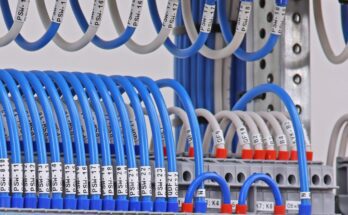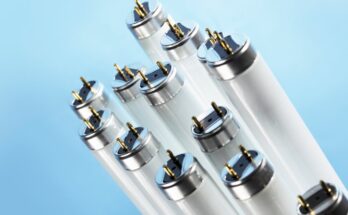The US presidential election next Tuesday will shape the world for years, if not decades, to come. Not only because Joe Biden and Donald Trump have radically different ideas about immigration, health care, race, the economy, climate change, and the role of the state itself, but because they represent very different visions of the US’s future as a technology superpower.
As a nonprofit, MIT Technology Review cannot endorse a candidate. Our main message is that whoever wins, it will not be enough for him to fix the US’s abject failures in handling the pandemic and to take climate change seriously. He will also have to get the country back on a competitive footing with China, a rapidly rising tech superpower that now has the added advantage of not being crippled by covid-19. To do that, he’ll have to make up for years of government neglect–long predating the current president–of the kind of research that made the US the world’s technology center in the first place.
The Trump scorecard
The president’s record on science and technology speaks for itself. From the start of the pandemic, he has proudly discounted the recommendations of experts. He has turned the Centers for Disease Control, once one of the world’s most trusted public-health agencies, into a stumbling bureaucratic joke; pressured the Food and Drug Administration to give hasty approval to unproven, possibly dangerous treatments and vaccines; treated his own coronavirus task force as largely irrelevant; and sidelined Anthony Fauci, the nation’s top infectious-disease expert, whom he called a “disaster.” At a recent rally, he mocked Biden for promising to “listen to the scientists”; by contrast, 81 Nobel laureates signed a letter supporting Biden for precisely that reason. Science, Nature, the New England Journal of Medicine, and the Lancet, arguably the four most important scientific journals in the world, have all slammed Trump’s handling of covid.
The president’s attitude toward climate science is, of course, equally dismissive. He has pulled the US out of the Paris accord; suggested global warming is a blip (“It’ll start getting cooler. You just watch“); rolled back a slew of regulations on pollution, greenhouse-gas emissions, fossil-fuel extraction, toxic chemicals, and other environmental issues; and tried–unsuccessfully–to block states from setting stricter emissions targets than the federal government.
These policies reflect the administration’s broader disdain for science and technology as a whole. Each year, the Trump White House has proposed deep cuts to non-defense-related research funding at agencies like the National Science Foundation, the National Institutes of Health, the Environmental Protection Agency, and the Department of Energy. Each year Congress has granted increases instead. That may be harder this time, when legislators are also trying to keep a battered economy afloat. The House bills passed so far just barely keep research funding at last year’s levels.
There are small bright spots. This year’s budget proposal from the administration, though it cuts 6.5% from the NSF, nearly doubles the agency’s research spending on artificial intelligence and quantum information science, technologies that could be economically and militarily important. The proposal also boosts NASA’s funding by 12%. However, much of that is to support Vice President Mike Pence’s vision of getting astronauts back to the moon by 2024–a showy, nostalgic, but unrealistic goal, conveniently timed for when Pence might run for president. Less flashy but more scientifically valuable research programs at NASA will be cut.
Rising in the east, setting in the west
Even if Joe Biden wins and reverses these policies, he will have to contend with a weakening of the US’s technological primacy that began well before Trump. The country that birthed Silicon Valley has become complacent about maintaining the scientific and industrial base that made the Valley possible.
For decades, the US has been turning its back on the essential role of government in supporting science and technology. Government-funded R&D has dropped from more than 1.8% of GDP in the mid-1960s, when it was at its peak, to just over 0.6% now (chart 1). Private-sector funding has made up for the drop.
Chart 1
The government’s share of funding for basic research–the precursor to the kinds of technologies companies can exploit–has been dropping too, from above 70% in the mid-20th century to 42% in 2017. Again, the private sector has filled the gap, but its priorities are different; much of the replacement money is in pharma. Governments are more likely to fund long-term, risky bets like clean energy, sustainable materials, or smart manufacturing–the kinds of technologies the world really needs right now.
Contrast this with the situation in China. There, government-funded R&D has gradually grown as a percentage of GDP (chart 2), even as the economy has exploded in size. The true measure of government investment is probably higher, since a lot of the private-sector R&D spending is by state-owned enterprises that to some extent take orders from the government.
Chart 2
And overall, China’s R&D spending is shooting up, approaching the level in the US (chart 3).
Chart 3
True, China is still far behind on many measures. Basic research, though it’s growing, still represents a much smaller share of GDP than in the US or other advanced economies (chart 4). Also, as we’ve written, although the number of scientific papers and patents published by Chinese researchers is ballooning, the quality of that work (as measured by things like the number of citations) is low, and homegrown Nobel laureates are few and far between.
Chart 4
Nonetheless, the gap is closing. Kai-fu Lee, a venture capitalist and former head of Google China, expressed an oft-heard view at a recent event held by the New York-based China Institute: the US, he said, is “further ahead in fundamental research in AI as well as almost any other domain,” but China is “catching up quickly” and has an edge in AI applications that require masses of data, such as machine translation and speech recognition. (Our China issue looked at several other areas in which the country is carving out an advantage.)
Much of China’s technological acceleration is linked to state-led plans such as “Made in China 2025,” which aims to make China more self-sufficient (pdf, page 21) in key high-tech industries like zero-emission vehicles, industrial robots, mobile-phone chips, and medical devices. This is in stark contrast to the US approach, where the main driver of decisions about where the money goes has been venture capitalists and the increasingly deep-pocketed tech giants, all of them desperate to find the next product idea that can rapidly scale into a billion-dollar business.
Of course, one should take the claims made about schemes like Made in China 2025 with a pinch of salt. The shortcomings of centrally planned economies are well documented, and governments are usually not very good at innovation. The regulatory reforms in the mid-20th century that paved the way for the venture capital industry are arguably some of the most important technology policies the US ever adopted.
Still, it’s become increasingly clear in the West that while the venture capital model is good at building things people want, it’s less good at producing things society needs in order to solve hard, long-term problems like pandemics and climate change.
Recently, Western economists such as University College London’s Mariana Mazzucato have been breathing credibility into the idea that governments should be more active in setting economic and technological priorities. In recent decades this kind of interventionism, known as industrial policy, has had a bad name; picking favorite sectors or companies to support tends to backfire. But Mazzucato calls for an approach that instead aims at a broad-based transformation, such as greening the economy. Other economists, like MIT’s Daron Acemoglu, argue that letting Silicon Valley set the agenda has not only limited innovation to the types of inventions that can make quick profits, but contributed to the growth of inequality.
The pandemic provides a telling illustration of America’s and China’s relative strengths. American companies–Moderna, Johnson & Johnson, Pfizer, and Novavax–are among the handful that currently have a covid-19 vaccine in phase 3 clinical trials. So are several Chinese firms–Sinovac, CanSino Biologics, and Fosun Pharma. But the US’s industrial base, depleted by decades of outsourcing, was pitifully incapable of mass-producing protective equipment, ventilators, and testing materials in the early days of the pandemic, while China’s ramped up in no time.
In other words, the old stereotype that the US invents things and China manufactures them is more out of date than ever. China is catching up to the US as an inventor and leaving it in the dust as a manufacturer. This is a good thing for the world as a whole; more competition means more sources of new ideas. But the US’s position in such a world is looking increasingly weak.
Facing the challenge
This summer, in response to both the US’s failures in the pandemic and the competition from China, a bipartisan group of legislators led by the Democratic senator Chuck Schumer and the Republican Todd Young introduced the Endless Frontier Act. It calls for investing $100 billion over five years to expand the NSF and to fund research in key fields, such as AI, quantum computing, biotech, advanced energy, and materials science. Though the bill was quickly forgotten as legislators bickered over fiscal stimulus and the Supreme Court nomination, it was a hopeful sign that politicians on both sides of the aisle are beginning to recognize the importance of science to reinvigorating the economy.
Biden has proposed spending even more–$300 billion over four years–on federal investments in R&D. His plan calls for major increases to various agencies, including the NSF and NIH, as well as “new breakthrough technology programs” in areas such as AI, 5G, and advanced materials. It also proposes a new Advanced Research Projects Agency for Health (ARPA-H) to further support medical research.
The Trump administration has been generally less specific on many technology topics and less enthusiastic about broadly funding research. Though it has generally sought cuts to R&D, especially in clean energy, it has increased investment in five key “industries of the future”–AI, quantum computing, 5G, advanced manufacturing, and biotechnology–albeit not on the scale Biden is calling for. Much of its attention has gone to reducing what it argues are barriers to innovation, such as regulations and taxes.
Biden’s promises, of course, would be costly to keep (although they’re dwarfed by this year’s stimulus bills, and both candidates plans’ would likely add trillions of dollars to the national debt over the coming decade). And it’s far from clear whether he would be able to follow through on them, or what the results would be. But for comparison, Made in China 2025 was launched in 2015, and in that year alone, the Chinese government created about $220 billion worth (pdf, p. 17) of state-backed investment funds to support it.
Another clear difference between the candidates is their attitude to immigration. Biden plans to expand the number of visas for highly skilled foreign workers, like the H-1B. The tech industry relies heavily on these workers–there’s a shortage of skilled labor even in the midst of a recession–and research shows that issuing visas to them also has the knock-on effect of creating new jobs for US-born workers. The Trump administration, however, is restricting those visas, and also plans to impose caps on the length of student visas, making it harder for students to finish their degrees.
Do foreign workers and students enjoy the benefits of a stay in America only to then set up shop in their home countries? Of course. Do they sometimes steal US intellectual property? No question. But it’s not a one-way trade. As long as the US remains a desirable place for people to study and work, some proportion of them will stay, and contribute their skills and energies here instead of taking them back home.
Already, countries like Canada and France are taking advantage of the US’s tighter visa policy by making it easier for foreign tech workers to come to them instead. Meanwhile, China’s “Thousand Talents Plan” invests heavily in getting both Chinese-born and foreign scientists to do their research in China–and, it’s alleged, enables the theft of American intellectual property. But what’s the best way for the US to respond: cut domestic research funding and visas to push even more scientists into China’s arms, or create a flourishing and welcoming research environment to make them want to stay?
An area Biden’s plan doesn’t mention, but that urgently needs addressing, is patents. They are routinely given for ideas that are obvious and in widespread use–IBM got a patent for out-of-office email autoreplies in 2017–as well as for things that are physically impossible, like anti-gravity devices. As Zia Qureshi, a fellow at The Brookings Institution, wrote in 2018, “Lawsuits by patent trolls comprise more than three-fifths of all lawsuits for IP infringement in the U.S., and cost the economy an estimated $500 billion in 1990-2010.”
This is one of those issues where reform notionally enjoys bipartisan support but, in practice, has been watered down by special interests. The next president needs to advocate for common-sense measures ensuring that patents are actually granted only to truly novel ideas, for limited periods of time.
An endless frontier
The name of Schumer and Young’s Endless Frontier Act is a reference to a report by Vannevar Bush, who had coordinated American research during World War II. As the war’s end came into sight, President Franklin Roosevelt asked Bush for ideas about how to apply scientific knowledge “in the days of peace ahead” for “the improvement of the national health, the creation of new enterprises bringing new jobs, and the betterment of the national standard of living.”
The resulting report, titled “Science, The Endless Frontier,” outlined in great detail how federal investments in science could help. Although many of its recommendations were initially scuppered by political backbiting, it would become a lasting argument for the government’s role in funding science to address the country’s most critical challenges.
That was 75 years ago, and those were very different times. In the interim, the prevailing wisdom about the respective roles of government and the private sector has shifted. But the value of science in solving our problems–a theme that Bush constantly returned to–has not changed, and the need for government to support the creation of that new knowledge is once again clear. The last few months of the pandemic have taught this lesson, and the contest with China in the years to come will hammer it home. The only question is whether the US will learn it the hard way.


